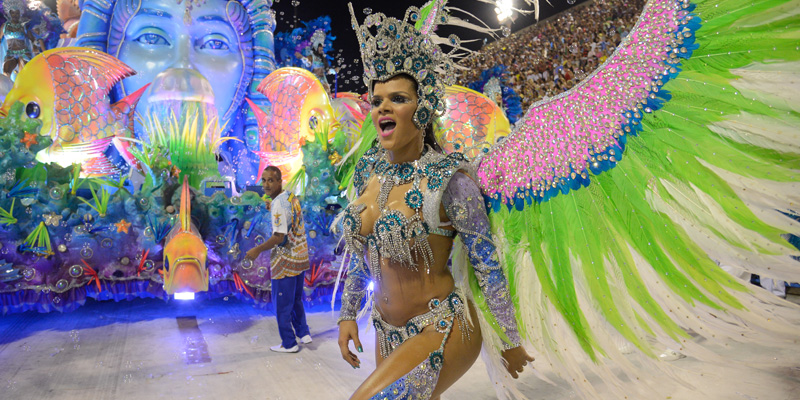
Brazil's Carnaval 2017: An Analysis
Carnaval is a large celebration in Brazil before Lent. It is an unique opportunity to experience the many artistic sides of the country and its culture. From its dancers and singers to the capoeira martial artists, tourists and locals alike are sure to have a great time. Here are some of the highlights that show what happened this year for Carnaval.
A cornerstone of the Carnaval tradition involves large street parades, with dancers from various so-called “samba schools” across the country. For many of them, such as the Tom Maior school of Samba, this is their shining moment every year. Tom Maior was the first group to appear in the festivities this year in Sao Paulo, and they set the stage for the others. By combining the traditional Samba with an unique contemporary twist on their outfits, they gave their viewers an unforgettable experience. There are event based businesses whose major revenue stream revolves around these parades, and those who make it come true. While dancers take up a good amount of the spotlight, there are other entertainers who get people hooked into visiting Brazil for the celebrations, such as martial artists.
In addition to being a powerful self-defense technique, capoeira is an expressive art form. During Carnaval, it is customary to use the martial art as a means of telling a story, especially in the northeastern parts of Brazil. A performance in Salvador told the rich history of the art. The performers often act in character, while nearby spectators chant lyrics to accompany the choreography. What started as a way to escape slavery in the16th century by Afro-Brazilian slaves has evolved into a combination of hip-hop and acrobatic maneuvers, with the intent to tell a cultural tale to the local and international communities. While dancers and capoeira artists are one part of the country that help move the narrative of Carnaval, they also rely on the musicians.
If choreographers are the life of Carnaval, then singers are its beating heart. When Caetano Veloso began singing Alegria Alegria to the crowd in Bahia, the atmosphere changed significantly as he nailed the performance. It was clear the fatigued partygoers felt revitalized from hearing the voice of their award winning idol. The immersion provided by a combination of song, dance, and heritage is what has made Carnaval so great, and it shall continue to do so in the future.
One of the best things about Carnaval is that there is always more of it to enjoy every year. You can enjoy it in different parts of the country each time to obtain a new experience, or focus on another part of the festivities, such as the martial artists or the dancers. Because Carnaval is a yearly event, there is plenty of time to begin studying the Portuguese language. You have a golden opportunity to get a head start! Take the first step today in learning this beautiful language, and exploring its cultural roots.

